April 25, 2024 | 13:27 GMT +7
April 25, 2024 | 13:27 GMT +7
Hotline: 0913.378.918
April 25, 2024 | 13:27 GMT +7
Hotline: 0913.378.918
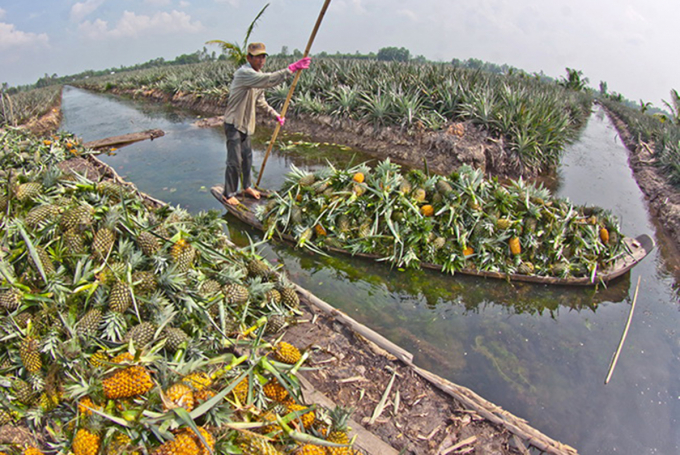
Cau Duc pineapples, a specialty of Hau Giang province, are grown on a 1,600-hectare area with more than two thirds cultivated in Hoa Tien commune (Vi Thanh city). 160 hectares of pineapples in Thanh Thang Cooperative, Hoa Tien commune are grown in accordance to Vietnamese Good Agricultural Practices (VietGAP) and 50 hectares are monitored with Autotimelapse solution. Photo: Duy Khuong.
According to the Agricultural Products Processing and Development Department, the export turnover of Vietnam's fruit and vegetable reached US$ 3,747 billion in 2019. In the first nine months of 2020, the turnover still reached US$ 2,491 billion despite the impact of Covid-19 pandemic.
Vietnam’s export witnessed the second fastest rate in the world, just behind Mexico with the export turnover ranking 7th in the world in 2018.
Vietnam's agricultural products have been exported to over 180 countries with more than 200 categories. In 2019, the export value of vegetables and fruits reached US$ 3,747 billion while the import value was US$ 1,778 billion, thus the trade surplus was US$1.969 billion.
According to the Agricultural Products Processing and Development Department, China is Vietnam’s number one agro-product export destination, accounting for 64.84%. It is followed by US market, constituting only 4%.
The Plant Protection Department said "China is Vietnam’s largest agro-product importer, which is becoming increasingly demanding. Agricultural exports into China would face more stringent checks than usual.
From January 1, 2019, China’s Department of Supervision on Animal and Plant Quarantine under General Administration of Customs officially apply quality and origin control standards on Vietnam’s agro-products.
Following the direction of Ministry of Agriculture and Rural Development, the Plant Protection Department joined hands with provinces and cities to grant traceability codes. By August, 2020, 1,735 growing areas and 1,832 packaging facilities specializing in nine fruits (dragon fruit, mango, bananas, litchi, rambutan, watermelon, longan, jackfruit, mangosteen) were accepted by China’s customs agency, therefore, fruits grown or processed in such areas will be exported to China through official channels.
Among those, Tien Giang province has the most number of accepted codes with 721 ones while Bac Giang and Binh Thuan have 289 and 267 codes respectively. Meanwhile, Ha Giang, Ninh Binh, Bac Ninh, Khanh Hoa, Tra Vinh, and Ca Mau province have only one code.
General Secretary of the Vietnam Fruit and Vegetable Association Dang Phuc Nguyen highlighted “Traceability of fruit and vegetables is gaining currency and is gradually becoming a requirement. This allows consumers to follow the movement of a product through specified stages of production, processing and distribution. Traceability is only possible if produces are grown or processed in a facilities granted with traceability codes or certified with VietGAP, GlobalGAP standards.”
However, the practice of granting traceability codes is slow, with only 7.5% of the total growing areas being certified. Thus, traceability cannot be widely adopted.
General Secretary of the Vietnam Fruit and Vegetable Association Dang Phuc Nguyen shared that China required Thai’s exported fruits and vegetables to have QR codes for traceability since 2019, and this might be applied to Vietnamese fruits and vegetables in a couple of years. Thus, Vietnam needs to gear up for it from now on.
Plant Protection Department warned that if agricultural production and processing facilities do not follow the regulations of importer, Vietnam will risk losing out.
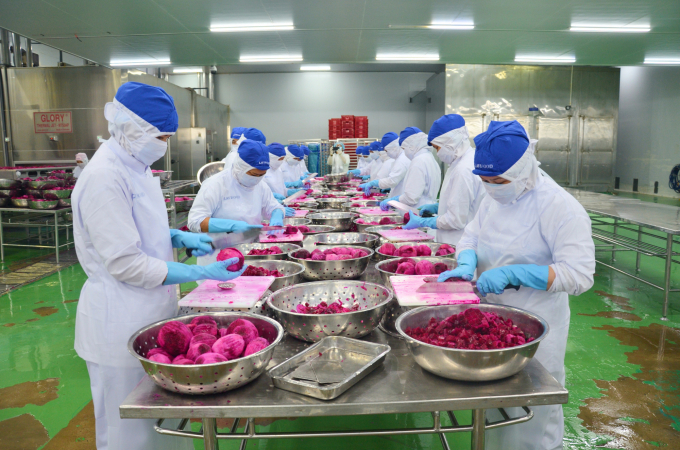
Dragon fruits in Long An Province processed prior to export. Photo: Minh Dam.
According to a recent report of the Department: “In June 2020, General Administration of Customs informed Vietnam of 220 shipments of mangos which did not conform to the regulations.
The Chinese’s customs agency requested to suspend the export of mangos from related stakeholders for further investigation and solutions.
This is attributed to the inefficient management in some localities which did not closely supervise facilities granted with traceability codes. There remains no links between the codes granting agency with the local and central authorities for stricter control.
“Some businesses deliberately used the codes of others for export. This not only adversely affects the reputation of Vietnamese mangoes, but also directly takes a toll on related businesses”, the representative of the Plant Protection Department underscored.
Most of our fruit and vegetable exporters are small in scale, and thereby weak in export planning and management. Besides, some even turn to unethical practices. This causes them to lose competitiveness and influence Vietnamese goods’ prestige in general. Thus, stricter measures are being imposed to resolve the problem once and for all.
Author: Pham Duy Tuong. Translated by Meagan Phan. Edited by Duc Huy.
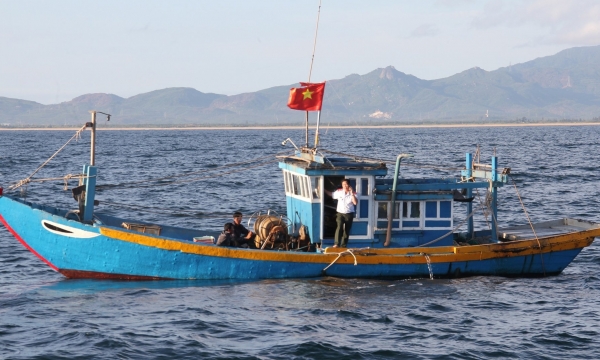
(VAN) Combating IUU fishing is a worldwide problem. As a result, governments must strengthen their collaboration in order to take effective action and guarantee the sustainability of seafood resources.
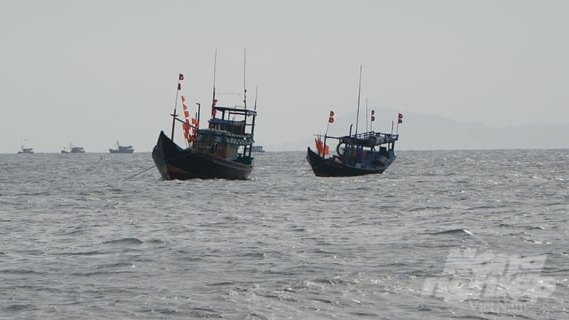
(VAN) Strict management of '3 no' fishing vessels in Ba Ria - Vung Tau helps the province effectively implement the EC's anti-IUU fishing recommendations and control the fishing fleet.
/2024/04/22/3159-9-202859_158.jpg)
(VAN) There are three main solution pillars for developing the crop production industry, including resources, infrastructure, and science and technology.
/2024/04/22/4244-anh-3-193503_494.jpg)
(VAN) The national crop production strategy is a good opportunity to create diversity, bring income to farmers, increase economic value, and contribute to socio-economic development.
/2024/04/22/1205-1-190414_594.jpg)
(VAN) The Prime Minister issued Decision No. 1784 dated December 30, 2023, approving the plan to develop the crop production industry until 2030, with a vision to 2050.
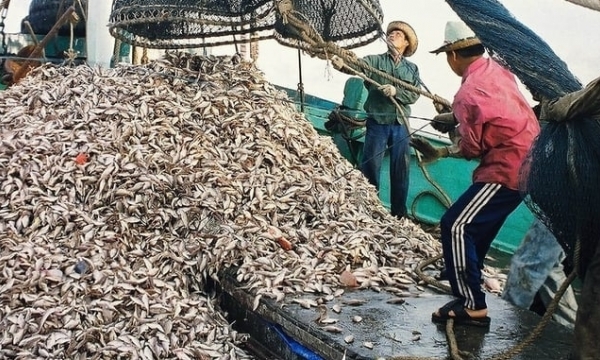
(VAN) The goal of the action plan is to identify anti-IUU fishing as an urgent, crucial and long-term task for the sustainable development of the fisheries sector.
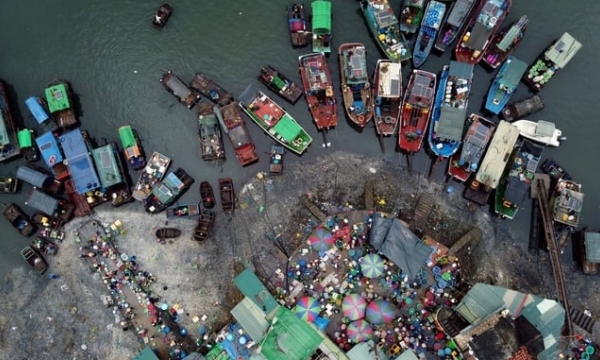
(VAN) Despite numerous challenges, Permanent Member of the Secretariat Truong Thi Mai emphasized the need for decisive action to achieve tangible results in anti-IUU fishing efforts.